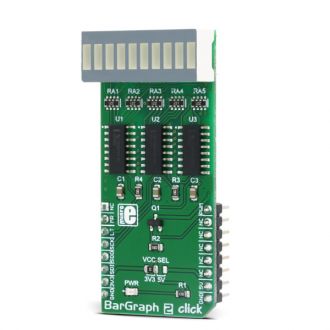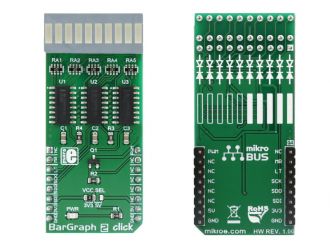
We strongly encourage users to use Package manager for sharing their code on Libstock website, because it boosts your efficiency and leaves the end user with no room for error. [more info]

Rating:
Author: MIKROE
Last Updated: 2018-05-21
Package Version: 1.0.0.0
mikroSDK Library: 1.0.0.0
Category: LED segment
Downloaded: 5637 times
Not followed.
License: MIT license
BarGraph 2 click is a 10-segment bar graph display click, which uses a high-quality, multicolor bar graph LED display. The bar graph display is a very popular device for displaying various properties, whether it be an audio level, current/voltage level, position of the encoder, or something else.
Do you want to subscribe in order to receive notifications regarding "BarGraph 2 click" changes.
Do you want to unsubscribe in order to stop receiving notifications regarding "BarGraph 2 click" changes.
Do you want to report abuse regarding "BarGraph 2 click".


Key functions:
Examples Description
void applicationTask()
{
for (i = 0; i < 11; i++)
{
bargraph2_set(i);
Delay_ms(100);
}
}
mikroE Libraries used in the example:
Additional notes and information
Depending on the development board you are using, you may need USB UART click, USB UART 2 click or RS232 click to connect to your PC, for development systems with no UART to USB interface available on the board. The terminal available in all MikroElektronika compilers, or any other terminal application of your choice, can be used to read the message.